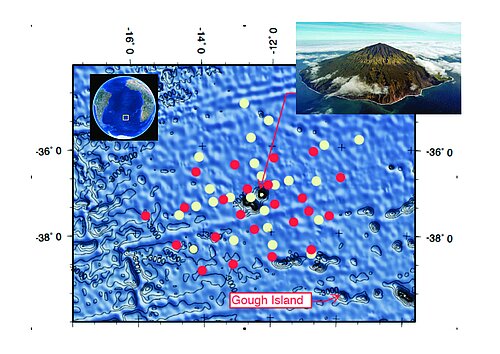Dr. Marion Jegen-Kulcsar
Tel.: +49 0431 600 2560
Fax: +49 0431 600 2922
e-mail: mjegen@geomar.de
Isolde
ISOLDE - Electromagnetic, gravimetric and seismic measurements to investigate the Tristan da Cunha hot spot and its role in the opening of the South Atlantic Ocean
Duration: 01.11.2010 - 31.06.2013
Sponsored by: DFG within the framework of SPP SAMPLE
Applicants: Dr. Marion Jegen-Kulcsar, Dr. Wilfried Jokat, Alfred-Wegener-Institut für Polar- und Meeresforschung (AWI), Dr. Wolfram Geißler, AWI
According to classical plume theory, the Tristan da Cunha hotspot is thought to have played a major role in the rifting of the South Atlantic margins and the creation of the aseismic Walvis Ridge by impinging at the base of the continental lithosphere shortly before or during the breakup of the South Atlantic margins. But Tristan da Cunha is enigmatic, as it cannot be clearly identified as a hot-spot but highly as a more shallow type of anomaly that may actually has been caused by the opening of the South Atlantic. The equivocal character of Tristan is largely due to lack of geophysical data in this region. To understand the tectonic processes of the opening of the South Atlantic, the formation of the Walvis Ridge and to understand, whether Tristan da Cunha is the cause or the consequence of the rifting, it is of central importance to characterize the region around Tristan da Cunha with geophysical data in a more coherent way. The aim of the project is a multi-disciplinary geophysical study of the region by acquiring marine electromagnetic, active and passive seismics as well as gravity data to identify the crustal structure and temperature and partial melt anomalies in the upper mantle.



